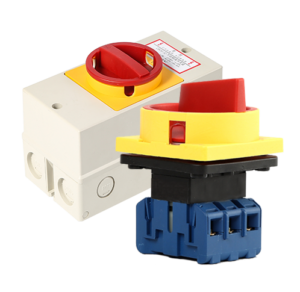 Welcome
WelcomeRotary Cam Switch Functionality
A rotary cam switch controls circuits by rotating a shaft. Shaft rotation drives a cam element activating contacts either sequentially or individually depending on configuration. Rotating shaft positions specify contact variations.
Their applications cover control panels and electronic appliances. Their robustness lies in managing different power levels. Position feedback is provided using detents or light indicators.
- Often incorporated in industrial and domestic electronics
- Handling different currents improves switch utility
Guarding Electrical Systems with Disconnect Switches
Disconnect switches provide safety by isolating circuits. Their primary purpose is to isolate power from circuits. Power cutoff ensures safe component servicing. Deactivate the disconnect switch prior to maintenance. Poor handling triggers dangerous outcomes.
Adhere to these essential safety protocols for circuits: Recognize the proper switch controlling your circuit. Confirm energy is off before manipulation. Adopt safety equipment and insulated tools properly. Reconnect the switch and assess system status.
- Frequently survey disconnect for impairments
- Secure in clean, dry locations to avoid damage
- Engage qualified personnel for consultations
Using Isolators for Safety
An isolator switch provides essential power disconnection in electrical systems. Unlike fuses and breakers designed to protect circuits, isolators physically separate power circuits. Isolator engagement creates a safe service environment.
- They facilitate testing by isolating devices safely
- Visual cues ensure correct isolation status
- In conclusion, isolators ensure safe work environments
Fluid Power Changeover
Changeover mechanisms protect power continuity. Swift switching between power feeds is essential. They eliminate power supply breaks during switching. Time without power is negligible due to improvements. Integral to systems with alternative energy needs. Automatic function prevents service disruptions
Cam Switch Function and Design
Learning about cam switches improves understanding of electrical systems. Rotary handles manipulate multiple switch contacts. Switch design allows detailed contact selection. The cam mechanism ensures dependable switch performance. Switch design supports precise and reliable function
- Additionally, knowing switch structure aids troubleshooting common faults
- Identifying contact roles is essential for proper installation
- Familiarity with specs maintains effective operation
Disconnect Switch Necessity
They provide vital safety in electrical infrastructure. Switches stop electrical flow when required. They promote repair safety by isolating loads. Diverse switch forms fulfill detailed operational criteria
- Common disconnect types serve industrial settings
- These switches break the circuit under load stress
- Vacuum disconnect switches enhance circuit protection
- Air gap isolation switches stop currents electrically
Identifying disconnect variants assists selection. Evaluating specs and environment assures secure operation
Electing the Right Isolator Switch
For selecting the ideal isolator switch, multiple considerations matter. The load or current capacity of the system. Consider voltage levels and potentials carefully. Cycle rates affect switch functionality. Dimensions and structural traits guide selection. Use of flame-retardant elements is beneficial. Comprehensive review leads to the most appropriate isolator.
Utilization of Changeover Switches in Factories
They provide essential functionality in production settings. Changeover switches ensure continuous power rerouting. Support power systems for reliability and backup. Used in motor circuits and power supply management. They ensure power reliability across diverse sectors
Comparison of Cam Switches, Disconnects, and Isolators
Picking the right device necessitates recognizing variations. Rotary cams allow configuration of many switch states. Isolation switches provide cut-off for power circuits. Isolators ensure safe load disconnection. They feature greater mechanical strength and current ratings
Resolving Common Switch Issues
Failures often due to improper contact or wear. Review mounting hardware and tighten loose parts. Intermittent lighting can be caused by switch or lamp defects. Examine components for defects or aging and replace. Confirm protective devices remain intact and reset if needed. Electricians provide guidance for persistent switch problems
Rotary Cam Mechanism and Operation
This switch type manages electrical current via electromechanical means. Operation is driven by a turning shaft engaging contacts. Movement alters the connection status of contacts sequentially. Cam mechanisms establish multiple selection positions. Intricate cam shapes generate multiple operating states
These switches have broad industrial and commercial deployment. Installed in industrial equipment and household gadgets.
- Important factors are mechanical size, positions availability, materials and conditions
